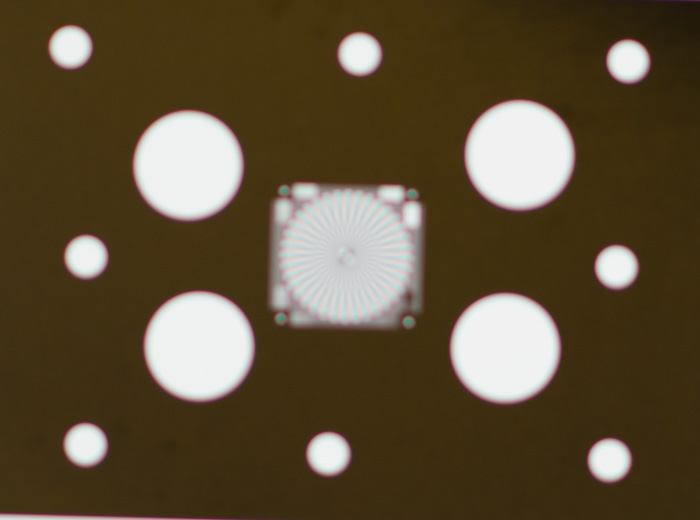This is a continuation of a test of the following lenses on the Sony a7RII:
- Zeiss 85mm f/1.8 Batis.
- Zeiss 85mm f/1.4 Otus.
- Leica 90mm f/2 Apo Summicron-M ASPH.
- AF-S Nikkor 85mm f/1.4 G.
- Sony 90mm f/2.8 FE Macro.
The test starts here.
I’ll get back to the MTF stuff before this test is over, but today I’d like to return to the issue that some have complained about with the Batis, something that they have called chromatic aberration (CA). Here’s a post I made a few days ago that shows the phenomenon in the wild. My task today is to catch it in the laboratory, where we can more closely observe and dissect it.
The examples I’ve seen on the web and the ones I posted here showed the effect occurring in the presence of blown highlights, off-center placement, and out-of-focus portions of the image. I wanted to find out if any or all of those were strictly necessary to get the phenomenon to happen.
I created a target and photographed it wide open with the Batis with the target in the center of the image, the target in focus, and no blown highlights. Here’s a crop:
The left edges of the white circles are slightly red, and the right edges are slightly blue. This is odd becasue it is a right-left effect, whereas most lens effects are symmetric about the axis. Just to make sure, let’s look at it with the Lr saturation control to +100:
Here’s a +100 saturation image with the highlights blown and recovered:
It’s no worse.
Defocusing gets us this:
It’s much easier to see the fringing, as well as false color in the Siemens star. Cranking up the saturation to +100 shows it even more clearly:
If we blow the highlights and attempt recovery in Lr, we get this:
Again, the effect is not related to blown highlights.
Turning the saturation to +100 gives us this:
OK, I think we’ve got it. Image in focus means tight fringing. Blown highlights won’t cause fringing or make it worse. OOF, we see mare apparent fringing, and blowing the highlights doesn’t make it worse. Whatever is causing the effect seems to be related to longitudinal chromatic aberration (LoCA).
In order to proceed, I need to decide whether to take a bunch of images with camera motion that can produce an amour of defocusing that will be the same across the lenses in the test, or to try a 3D target and do everything in one shot for each lens for each aperture.
Before I do that, I’m going back and looking at the slanted edge color fringing tests I did a few days ago. In those tests, I looked at the horizontal edges, not the vertical ones. The horizontal edges appear clean in this test; all the problems are in the vertical ones.
Stay tuned.
Postscript. Although it’s certainly not an intended use of Imatest, we can use the program to look at the edge profiles and thus see the fringing of the OOF image more clearly and see that it’s not symmetric about the lens axis:
See the red highlighting in the inset to see which edge we’re looking at in which picture.









Leave a Reply